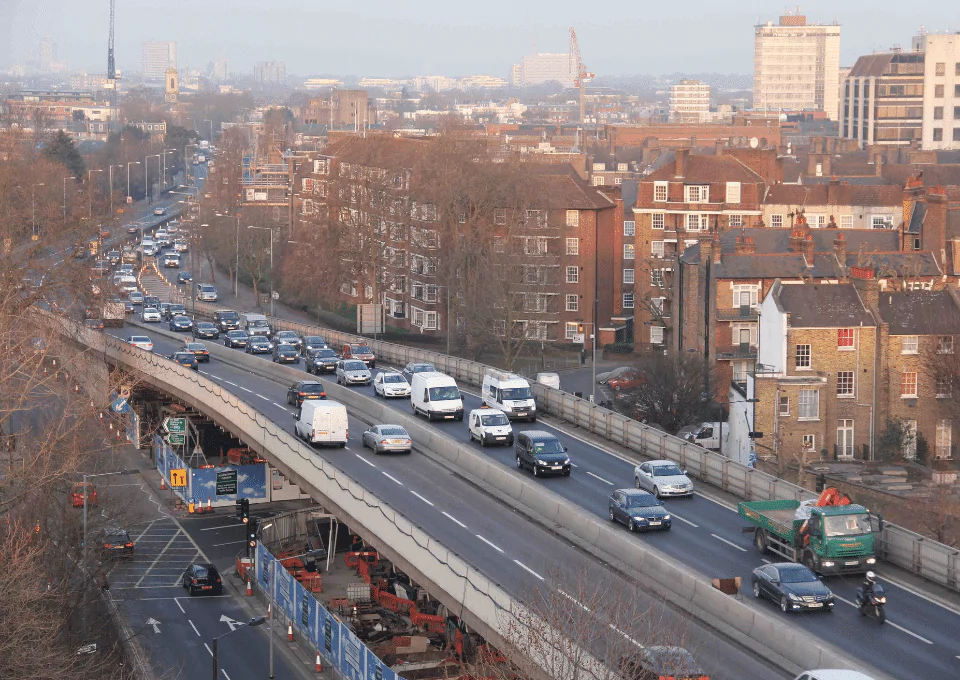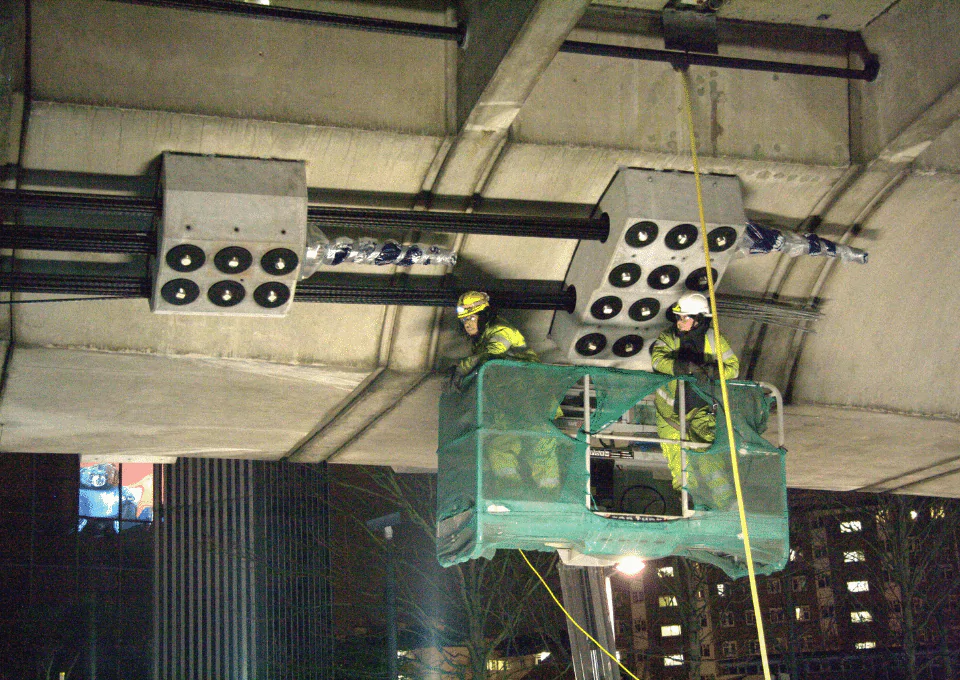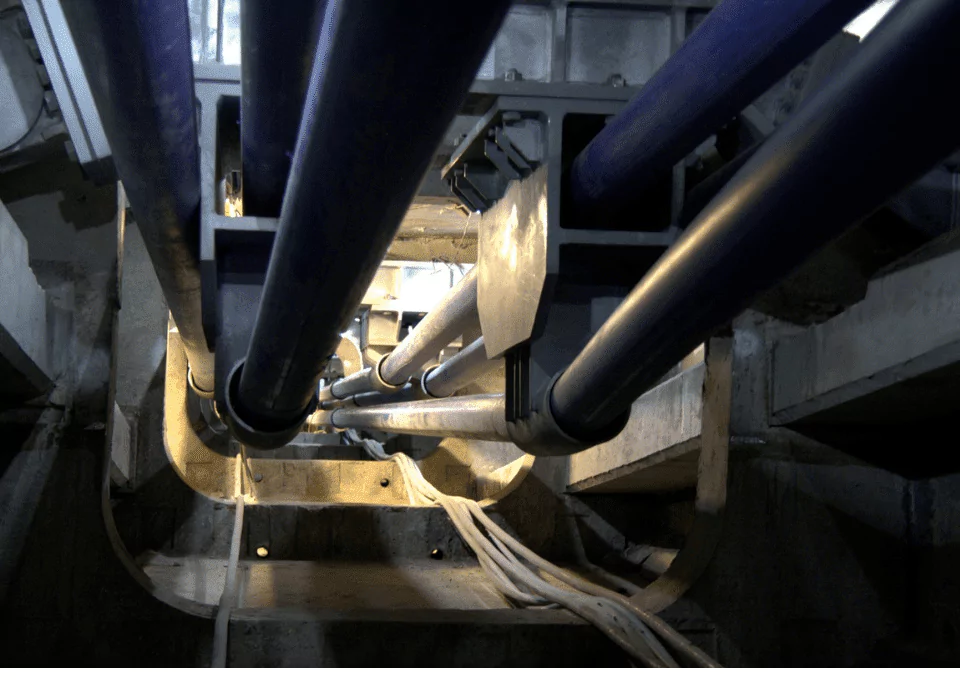
An urban worksite
An emergency repair contract enabled the critical structure, which is on the main highway route from Heathrow Airport to central London, to be reopened in time for the 2012 Olympic Games. But a more extensive intervention was subsequently required to secure its long-term future.
The standard approach to such an operation is relatively straightforward, but the particular circumstances and environment of Hammersmith Flyover demanded a rethink by specialist subcontractor Freyssinet’s team. The viaduct carries the highway over a congested interchange where local roads, bus routes and footpaths compete for space around commercial buildings, subways and a tube station. Maintaining headroom for vehicle access below the viaduct was just as crucial as the safety of traffic on top of the flyover.



